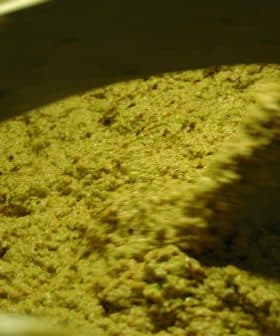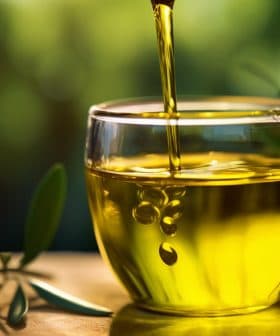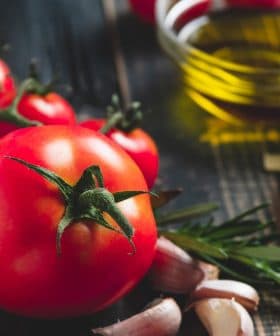Scientists Respond to Debate Over Health Claims on Olive Oil Labels
The article discusses the controversy in Greece over the implementation of EU labeling regulation 432/2012 regarding the health claim for extra virgin olive oil containing polyphenols. The debate centers around the specific phenolic compounds that can be measured to comply with the regulation, with some key compounds like oleocanthal and oleacein being questioned for inclusion in the measurement.
Over the last year I have been writing about the controversy in Greece over the implementation of EU labeling regulation 432/2012 which states: “Olive oil polyphenols contribute to the protection of blood lipids from oxidative stress.”
See Also:Greece Flip-Flops onextra virgin olive oil Labeling
The regulation further states, “the claim may be used only for olive oil which contains at least 5 mg of hydroxytyrosol and its derivatives (e.g. oleuropein complex and tyrosol) per 20 g of olive oil. In order to bear the claim information shall be given to the consumer that the beneficial effect is obtained with a daily intake of 20 g of olive oil.”
In other words, 250mg of polyphenols per kg ofextra virgin olive oil would be needed to qualify for the health claim.
Since the regulation has come into effect, I am aware of noextra virgin olive oil on the market in Europe that has placed this health claim on their label (though the claim is widely cited on websites and marketing materials), and it was the first time a specific quantity of polyphenols was required to justify a health claim for EVOO.

The debate began when a question was posed to the Greek minister for Agricultural Development and Food Mr. Athanasios Tsaftaris, who responded by saying “oleocanthal and oleacein cannot be used to make any health claims because they are not included in the EU Regulation 432/2012.”
After that response from Mr. Tsaftaris, I did some additional research and discovered this regulation was mainly based on the EUROLIVE human study conducted by Dr. María-Isabel Covas who was head of the Cardiovascular Risk and Nutrition Research Group at the IMIM-Research Institute, Hospital del Mar in Barcelona, Spain. I could not find her email but I did locate the email of Dr. Valentini Konstantinidou who worked with Dr. Covas and contacted her seeking clarification. Since they chose three different qualities of virgin olive oil to use in the EUROLIVE human study they must be based on the presence of specific amount of phenolic compounds they could measure.
I was curious about why the EUROLIVE study gave the total phenolic content of the oils they used but not the specific phenolic compounds present in the three different qualities of VOO they chose.
Dr. Konstantinidou responded the next day to my email:
“First of all, in the EUROLIVE study, tyrosol and hydroxytyrosol were measured as biomarkers of compliance in urine samples of the volunteers. Also they were used to classify the used olive oils according to their high, medium and low content.
Secondly, the derivatives of hydroxytyrosol, are not all well-defined nor easily extracted yet. That is because there are so many others factors in our gastrointestinal track that affect the formulation of these derivatives, such as (but not limited to) microbiota. Thus, hydroxytyrosol, tyrosol and oleocanthal could be measured in theextra virgin olive oil but are not the only ones there. Also, they are not the only ones that could serve as biomarkers of compliance in humans (maybe the most abundant until now).”
The problem was that some key individual polyphenols could not be measured accurately at the time using HPLC(High-Performance Liquid Chromatography). In 2012 however, Dr. Magiatis from the University of Athens was able to invent an accurate method of measuring individual phenolic compounds such as oleocanthal and oleacein and others using NMR (Nuclear Magnetic Resonance).
In response to my question regarding the NMR method of measurement of individual phenolic compounds in EVOO, Dr. Konstantinidou went on to say: “I have no hands-on experience on the NMR method that Dr. Magiatis has developed, but as far as I know, I believe there is grand potential there. NMR could replace HPLC and maybe established as a reference method for the measurement of these phenols in extra virgin olive oil. I believe more replication and/or standardization is needed.”
I then requested Dr. Konstantinidou’s permission to publish her response and if she was not agreeable perhaps she could pass on my request for clarification to Dr. Covas for an official response. Dr. Covas opinion would give the definitive answer as to which phenolic compounds could be measured in order to comply with EU regulation 432/2012.
The next day I received this email from Dr. Covas: “EFSA claim refer to hydroxytyrosol and derivatives (including tyrosol). Hydroxytyrosol and tyrosol are present in olive oil as free forms but mainly as conjugates (i. e. oleuropein and ligstrosides). Thus all forms (free and conjugates) in which tyrosol and hydroxytyrosol are present must be measured.”
Therefore, hydroxytyrosol, tyrosol and all their derivatives can be measured for compliance. According to Dr. Magiatis, these would include oleocanthal, oleacein, oleuropein aglycon, and ligstroside aglycon.
As of the date of this publication I have not received a response from the EU on whether oleocanthal and oleacein can be included in the measurement of polyphenols in order to comply with EU regulation 432/2012.









